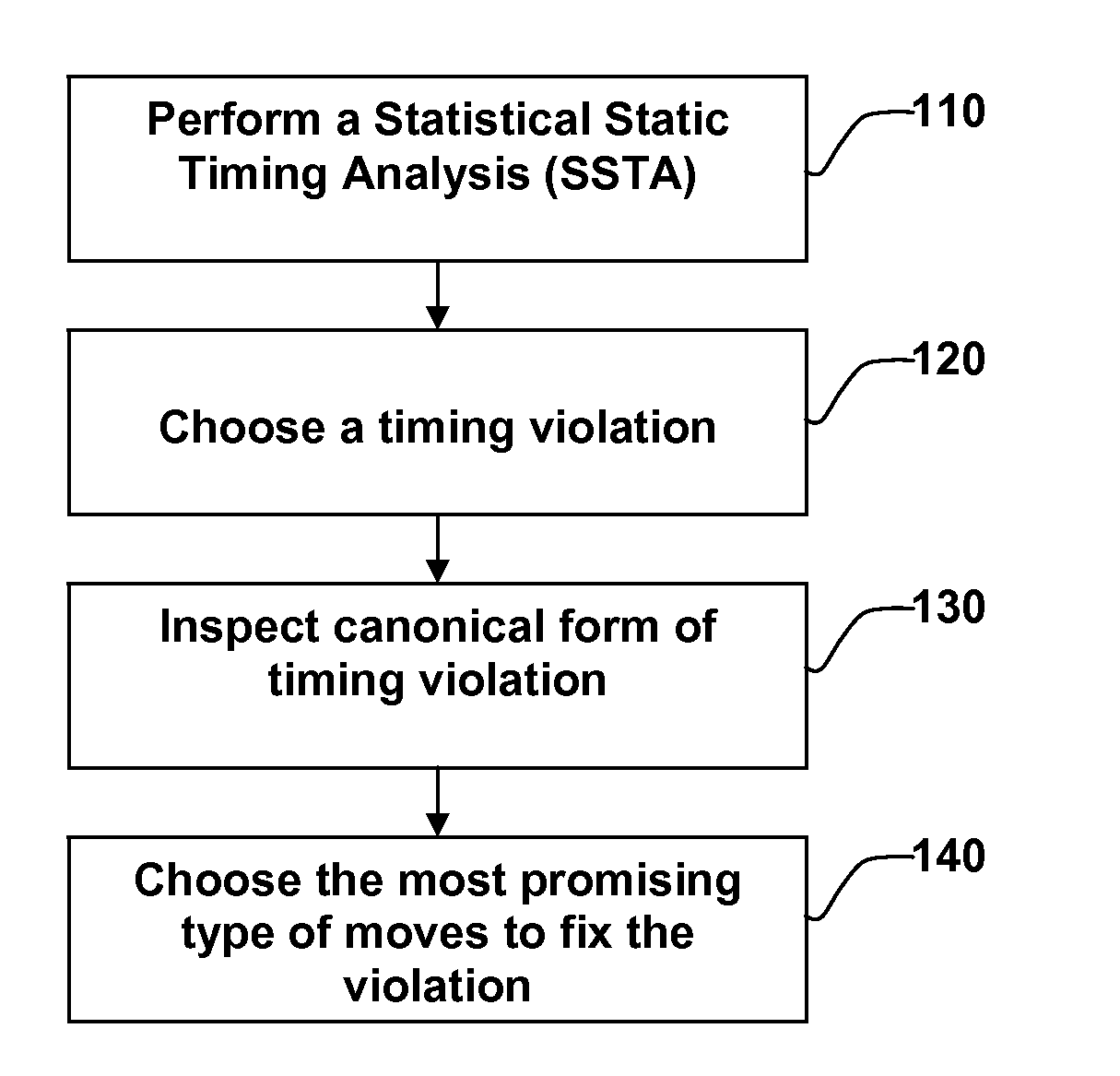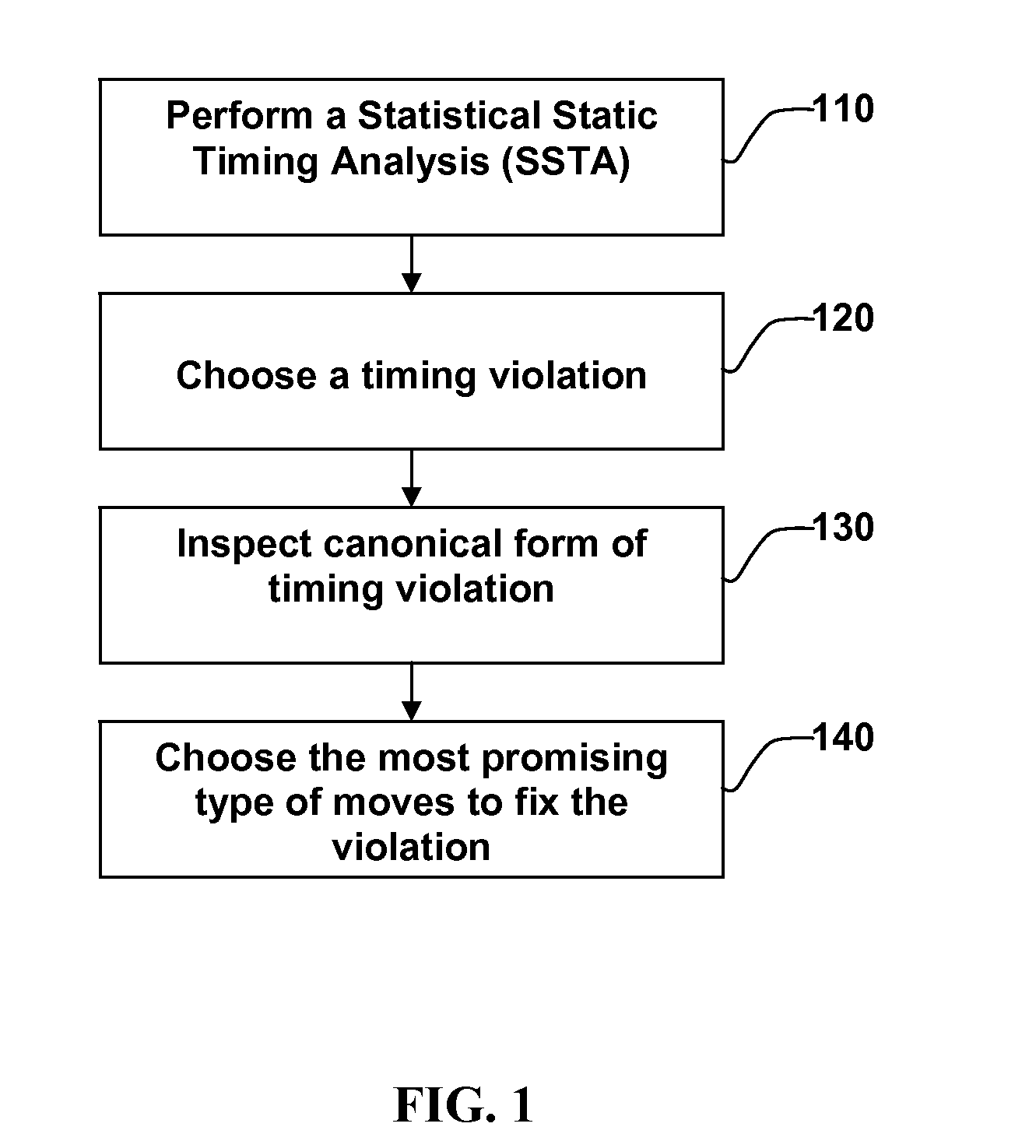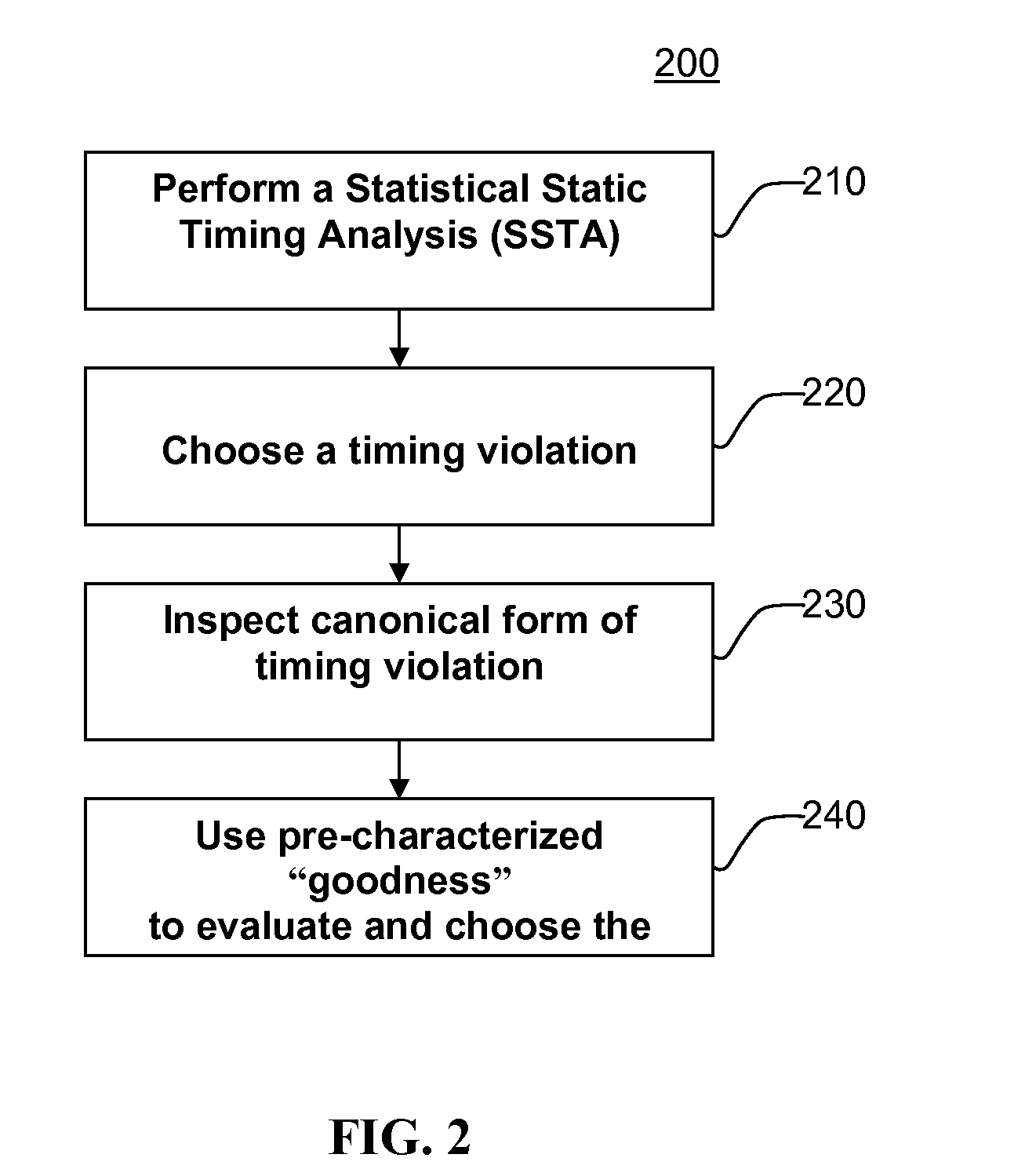Method for Achieving An Efficient Statistical Optimization of Integrated Circuits
- Summary
- Abstract
- Description
- Claims
- Application Information
AI Technical Summary
Benefits of technology
Problems solved by technology
Method used
Image
Examples
example 1
[0034]Consider an early mode timing test slack of S=−5+2ΔX1−ΔX2+ΔR in a timing methodology in which there are two global sources of variation, and worst-case projection is used for timing sign-off The worst-case projection of slack S is −5+2(−3)−(3)+(−3)=−17 ps which is obtained by projecting each source of variation to either plus or minus 3 sigma, whichever makes the slack worse (smaller). Consider a delay pad cell whose goodness has been pre-characterized as D1=7−ΔX1+ΔX2+ΔR. Then, the following equation for a slack after inserting one delay pad cell is provided, wherein: S+D1=2+ΔX1+√{square root over (2)}ΔR with a worst-case projection of −5.2 ps. After inserting two delay pad cells one obtains S+2D1−9+ΔX2+√{square root over (3)}ΔR with a worst-case projection of +0.9 ps, which would fix the timing violation. If three pad cells were to be inserted, one would obtain S+3D1=16−ΔX1+2ΔX22ΔR with a worst-case projection of +1.0 ps. Thus, it is seen in the present example that one can d...
example 2
[0035]Consider a timing test slack of S=−5+2ΔX1−ΔX2+ΔR with a worst-case projection of −17 ps as before. Consider a situation where there are two delay pad cells available. The first cell has a goodness function D1=4−ΔX1+ΔX2+ΔR, and is a relatively inexpensive cell to use in terms of area or power. The other pad cell has a goodness function D2=7−ΔX1+ΔR and is relatively expensive in terms of area or power. Using algebra, one finds that S+D1+D2=6+√{square root over (3)}ΔR with a worst-case projection of +0.9 ps, implying that in this instance, the combination of one cheap and one costly pad cell will succeed and achieve a positive slack. The example demonstrates the timing benefits of sensitivity cancellation since the combination of one of each of the two types of pad cells completely cancels out global variation in the slack, leaving only independently random variation. This allows for an efficient fix to the original timing violation.
[0036]General formulation: The two prior exampl...
PUM
 Login to View More
Login to View More Abstract
Description
Claims
Application Information
 Login to View More
Login to View More - R&D
- Intellectual Property
- Life Sciences
- Materials
- Tech Scout
- Unparalleled Data Quality
- Higher Quality Content
- 60% Fewer Hallucinations
Browse by: Latest US Patents, China's latest patents, Technical Efficacy Thesaurus, Application Domain, Technology Topic, Popular Technical Reports.
© 2025 PatSnap. All rights reserved.Legal|Privacy policy|Modern Slavery Act Transparency Statement|Sitemap|About US| Contact US: help@patsnap.com



